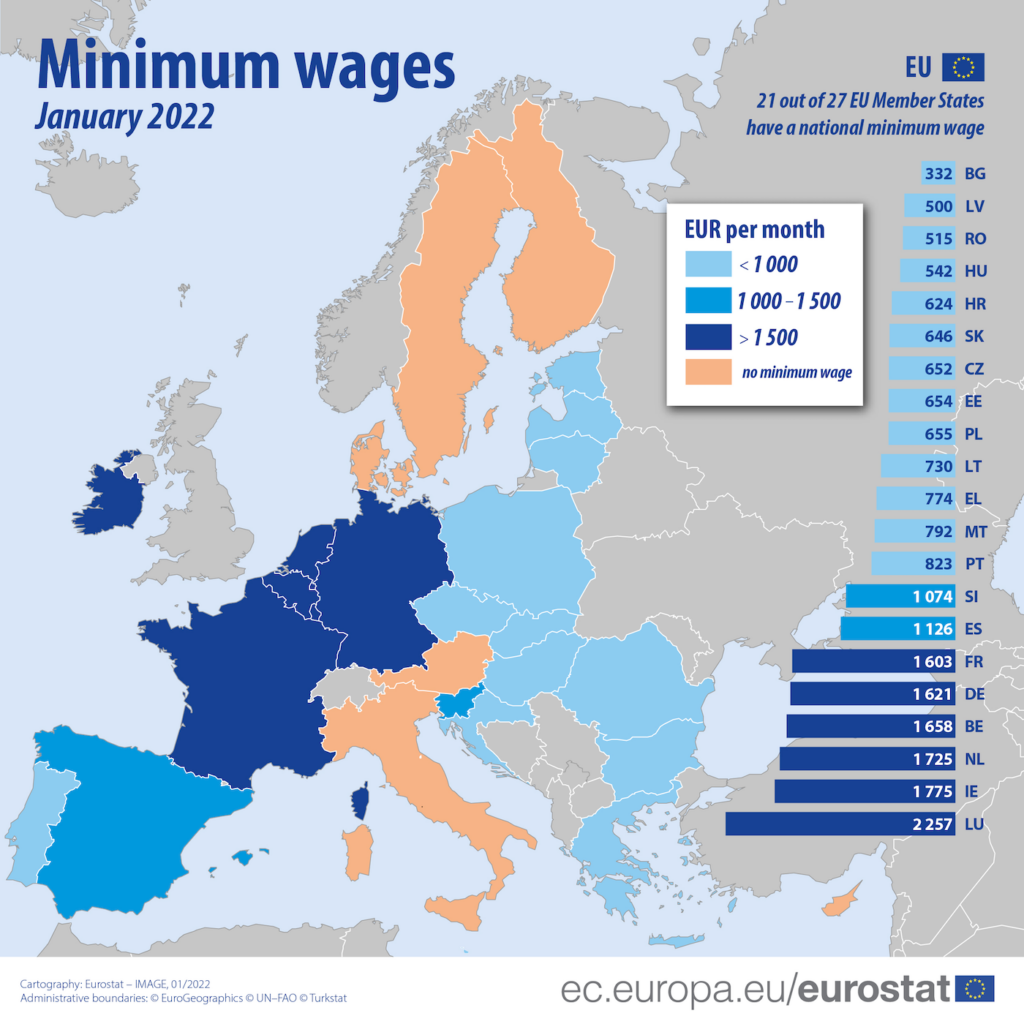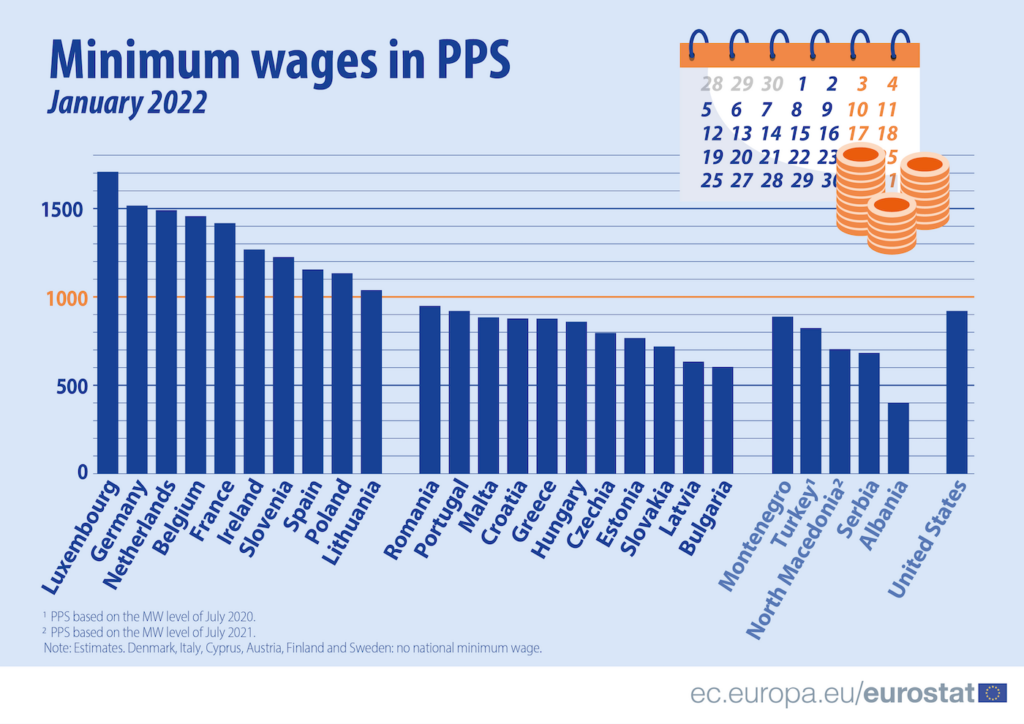
The largest trade unions say that the wage agreements include increases ranging from 8 to 18 percent.Continue reading

Although minimum wages have grown almost everywhere in the European Union in 2022, the nominal increase of almost 20% in Hungary was by far the largest. This puts Hungary’s minimum wage ahead of five EU Member States in both gross value and purchasing power.
After a rather modest increase in 2021, minimum wages rose more substantially in the EU Member States in 2022.
Hungary’s statutory rate was also increased from monthly gross HUF 167,400 (EUR 473) to HUF 200,000 (EUR 542), in January 2021. This remarkable hike of almost 20 percent proved to be the highest in the European Union.
This has put the Hungarian national minimum wage ahead of five other countries of the Bloc in both gross value and purchasing power, including Bulgaria, Latvia, Slovakia, Estonia, and the Czech Republic, according to Eurofound and Eurostat data.

Across the EU, the average increase might be around 6% in 2022, after the more modest 4 percent in 2021, Eurofound’s overview shows. It is important to add, however, that negotiations have not yet been concluded in all countries. This could somewhat refine the overall picture.
Despite the fact that Hungary had the largest nominal minimum wage increase, the new sum is still in the bottom third on the list of 21 EU Member States that have statutory rates.
These countries can be divided into three main groups based on their levels in euros:
However, the minimum wage rate is more accurate when price level differences are taken into account with purchasing power standard (PPS), as this way the exchange rate of the local currency against the euro does not distort the results. (It is important to note that Eurostat only records gross wages in purchasing power standard, even though net wages would give a more accurate picture).
Another important consideration is that a two-tiered minimum wage system like the Hungarian one, which also distinguishes a compulsory minimum wage band for skilled workers, is not common in the EU. This was also increased from HUF 219,000 (EUR 619) to HUF 260,000 (EUR 735) in 2022.

When expressed in purchasing power standard, Hungary’s new minimum wage level of EUR 542 still remains in the lowest third in the EU ahead of only Bulgaria, Latvia, Slovakia, Estonia, and the Czech Republic.
Compared to previous years, Hungary was able to overtake the Czech Republic on the list, while the Romanian and Polish minimum wages in gross terms remain higher than the Hungarian one, while the Slovakian one is still lower.
Featured photo illustration by Tamás Vasvári/MTI